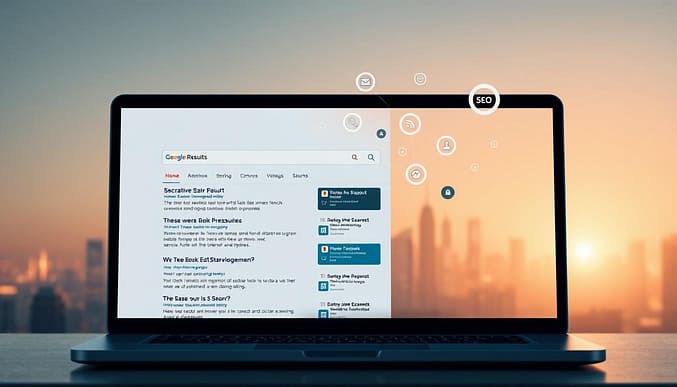SEO vs SEM: Differences, Benefits, and Which Strategy Wins?
When building a digital marketing plan, understanding how to leverage organic growth and paid advertising is essential. Search engine optimization focuses on improving website visibility through content quality, technical adjustments, and user experience enhancements. In contrast, search engine marketing combines these efforts with paid ads to target specific audiences instantly. Both strategies aim to boost rankings in search results, but their approaches differ significantly.
Choosing between these methods depends on your business goals. For example, companies needing quick visibility might prioritize paid campaigns, while those investing in long-term brand authority may lean toward organic tactics. Data from tools like Ahrefs and Semrush reveals how each strategy impacts traffic and conversions differently.
This article breaks down cost, timing, and performance factors to help you decide which approach aligns with your budget and objectives. We’ll also explore real-world examples to illustrate how businesses in the United States balance these tactics for sustainable growth.
Key Takeaways
- Organic strategies require time but offer lasting results, while paid ads deliver immediate visibility.
- Budget allocation depends on whether short-term gains or long-term sustainability matter most.
- Combining both methods often maximizes reach in search engine results.
- Performance tracking tools like Semrush provide actionable insights for refining campaigns.
- Businesses must align their strategy with audience behavior and market trends.
Understanding SEO and SEM Fundamentals
Navigating digital marketing requires clarity on two core strategies: one focused on gradual growth, the other blending patience with instant outreach. Let’s break down their foundations to see how they complement each other.

Defining Search Engine Optimization
Search engine optimization involves refining three pillars: content quality, website structure, and external credibility. For example, optimizing title tags or improving page speed helps crawlers understand your site better. Off-page tactics like earning backlinks from reputable sources act as endorsements, signaling trust to algorithms.
This approach builds visibility steadily. A blog post targeting niche keywords might take months to rank but can drive traffic for years. Tools like Ahrefs highlight how backlinks and technical tweaks impact organic performance over time.
Defining Search Engine Marketing
Search engine marketing casts a wider net. It combines organic efforts with paid methods like pay-per-click ads. While SEO nurtures lasting authority, paid campaigns place your brand at the top of results instantly for competitive terms.
For instance, bidding on high-intent keywords through Google Ads captures users ready to buy. This hybrid model balances immediate conversions with sustainable growth, adapting to shifting audience behaviors.
Key Differences Between Organic and Paid Search
The digital landscape offers two paths: building authority over time or buying immediate attention. While both aim to boost visibility, their methods and timelines diverge sharply.

Organic Results and SEO Techniques
Organic rankings depend on aligning with search engine algorithms. Quality content, relevant keywords, and authoritative backlinks signal trustworthiness. Technical elements like meta tags and site speed also play critical roles.
For example, a well-structured blog post might take six months to rank but sustain traffic for years. Tools like Google Search Console reveal how internal linking and mobile optimization impact performance.
Paid Ads and PPC Mechanics
Paid campaigns skip the wait. Bidding on high-value keywords places ads above organic results instantly. A bakery could target “same-day cake delivery” through Google Ads, capturing urgent buyers.
Budgets dictate visibility, but costs rise with competition. Unlike gradual organic growth, paid marketing stops driving clicks once funding pauses.
Exploring the Benefits and Limitations
Every marketing approach has its strengths and trade-offs. Understanding what each strategy offers—and where it falls short—helps businesses allocate resources effectively.
Advantages of Organic Growth Tactics
Organic methods build lasting visibility. High-quality content and technical optimizations improve site authority, attracting consistent traffic over time. For example, a local bakery’s blog targeting “gluten-free recipes” might rank gradually but generate leads for years without ongoing costs.
Advantages of Paid Campaigns
Paid ads deliver instant clicks. Businesses bidding on terms like “emergency plumbing services” appear at the top of results immediately. This works well for promotions or time-sensitive offers, though budgets must sustain bids in competitive markets.
Balancing Strengths and Weaknesses
Organic strategies require patience. A new site might take 6–12 months to gain traction. Paid campaigns, while fast, stop driving traffic once funding ends. Combining both approaches, as shown in search marketing strategies, bridges gaps. A tech startup could use paid ads to launch a product while optimizing content for long-term growth.
In-Depth Analysis of Cost, Timing, and Performance
Balancing budgets and timelines shapes every digital strategy. Whether prioritizing gradual growth or instant visibility, understanding financial commitments and results timelines is critical for sustainable success.
Cost Structures: Investments in Organic vs. Paid
Organic optimization demands upfront work. Creating quality content, improving site speed, and earning backlinks require initial investments. A 2023 study by Backlinko found businesses spend $2,000–$10,000 monthly on content creation alone during early stages.
Paid campaigns, however, rely on continuous budgets. Google Ads data shows average costs per click range from $1–$50 in competitive industries like insurance. While SEO pricing strategies stabilize over time, paid ads need ongoing funding to maintain visibility.
Speed of Results: Immediate Traffic vs. Gradual Growth
Paid ads deliver clicks within hours. A local gym bidding on “24/7 fitness near me” can fill classes overnight. But traffic vanishes if budgets pause. Organic methods take 4–12 months to rank but sustain visibility for years.
For example, a software company spending $5,000 monthly on ads might see 1,000 visits instantly. The same budget invested in optimization could generate 3,000 monthly visits after eight months—with lower long-term costs.
Tools like Google Analytics help track metrics like click-through rates and conversion paths. Combining both approaches balances immediate wins with lasting authority in search engines.
seo vs sem: Strategic Considerations for Your Business
Effective digital marketing demands strategies tailored to your company’s unique needs. Whether prioritizing long-term authority or instant conversions, aligning tactics with core objectives ensures resources drive measurable outcomes.
Aligning Strategies with Business Goals
Keyword research reveals what your audience seeks. A fitness app targeting “home workout plans” might focus on organic results to build credibility. Meanwhile, a seasonal product could use Google Ads to dominate holiday searches.
One e-commerce brand shifted budgets based on data. Their paid campaigns drove 40% of Black Friday sales, while optimized product pages sustained traffic year-round. This balance between immediate wins and lasting growth defines modern marketing success.
Utilizing Keyword Research and Data Insights
Tools like Google Analytics show which terms convert. A software company found that “cloud storage solutions” had high advertising costs but low organic competition. They reallocated funds to create detailed guides ranking organically within months.
PPC metrics also inform content strategies. High bounce rates on paid landing pages led a travel agency to redesign its user experience. The result? A 25% increase in bookings across both paid and organic channels.
Building an Integrated Search Marketing Approach
A unified approach to search marketing bridges immediate and long-term goals. By combining organic and paid tactics, businesses amplify visibility across engines while optimizing budget efficiency. This strategy turns isolated efforts into a cohesive system where insights from one channel fuel improvements in the other.
Synergies Between Organic and Paid Tactics
Paid campaigns reveal high-performing keywords through clicks and conversions. These insights refine organic content strategies. For example, a clothing brand noticed “sustainable activewear” drove paid sales. They created blog content around the term, ranking organically within months.
Creating a Cohesive Content and Ad Strategy
Align messaging across channels to reinforce credibility. Repurpose top-performing blog sections into ad copy or landing pages. A 2023 case study showed brands reusing research data across both strategies reduced cost per lead by 34%.
| Strategy | Organic Benefit | Paid Benefit |
|---|---|---|
| Keyword Reuse | Improved rankings | Higher ad relevance |
| Data Sharing | Content optimization | Bid adjustments |
| Audience Insights | Better targeting | Lower CPC |
Measuring and Optimizing Campaign Performance
Track metrics like click-through rates and conversion paths. A/B test ad variations against organic landing pages to identify winning elements. Tools like Google Analytics highlight differences in user behavior between channels, enabling smarter budget shifts.
Businesses adopting integrated search strategies report 28% higher ROI than those using isolated tactics. Continuous refinement based on shared data keeps campaigns agile in shifting engines.
Conclusion
Choosing the right digital strategy hinges on balancing immediate impact with lasting value. Organic methods thrive through backlinks and quality content, building authority over months. Paid campaigns fill short-term gaps by targeting high-intent searches, though visibility fades without sustained budgets.
The costs and timelines differ sharply. Optimizing for gradual growth demands patience but yields compounding returns. Instant ads require continuous funding but deliver quick conversions. Businesses must align this process with their goals: urgent promotions vs. enduring market presence.
An integrated approach often works best. Use paid ads to test keywords, then refine organic content using data-driven insights. Tools like Google Analytics and Semrush help track performance across both strategies.
Focus on building backlinks while running targeted campaigns. This dual effort maximizes search visibility without overspending. Regularly audit your process to adapt to changing algorithms and audience behavior.
Start by auditing current resources. Can upfront costs support long-term organic growth? Does your team have the tools to manage both strategies? Answering these questions creates a tailored roadmap for sustainable success.